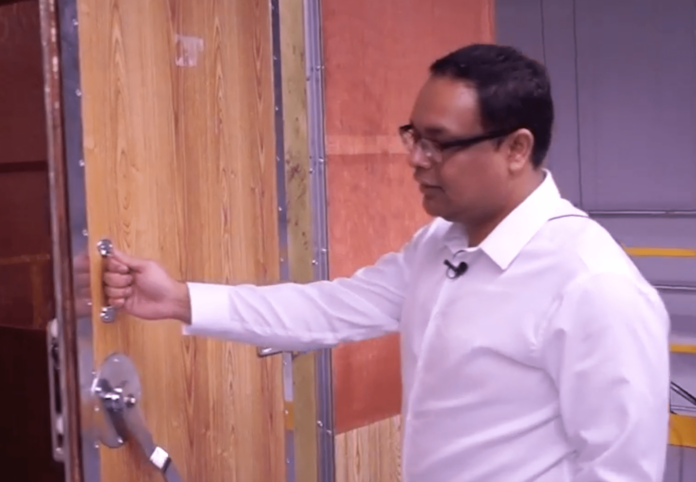Look inside AT&T’s Austin Spectrum Lab with RCRtv
AUSTIN, Texas – In an unassuming building in Austin, Texas, AT&T engineers can recreate virtually any network condition in the high-tech Austin Spectrum Lab, which will also serve as ground zero for the carrier’s upcoming trials of “5G.”
RCR Wireless News took an exclusive tour with Shuvojit Chowdhury, principal member of the technical staff and manager of the facility.
A company spokeswoman said the lab team “uses the end-to-end ecosystems to act as crash test dummies. They try to break the production-like network so it won’t break on customers. … It’s their job to put our equipment through the gauntlet before it goes live on our wireless network.”
Different areas, including several Faraday cages, of the lab are dedicated to testing Wi-Fi, distributed antenna systems, radio frequency, small cell and other equipment, so many familiar vendors are represented. On the core side, the Austin Spectrum Lab contains 2G, 3G and LTE equipment, along with evolved packet cores supporting network functions virtualization and software-defined networking in the evolution toward 5G technology.
Chowdhury, in a room filled with empty rack space for equipment, said upcoming tests of 5G technology will take place in the office. All of the equipment is also available for remote engineers to run simulated network workloads.
On the 5G technology front, AT&T said: “We plan to collaborate with Ericsson and Intel to work on 5G solutions in our labs starting in the second quarter of this year, with outdoor tests and trials over the summer. And, we expect field trials of 5G technologies to provide wireless connectivity to fixed locations in Austin before the end of this year. The trials will help guide our 5G standards contributions, and set the stage for widespread commercial and mobile availability once technology standards for 5G are established. We expect 5G to deliver speeds 10- to 100-times faster than today’s average 4G LTE connections. Customers will see speeds measured in gigabits per second, not megabits.”
According to a Twitter post from wireless consultant Steve Crowley, AT&T has filed paperwork with the Federal Communications Commission seeking an experimental license to conduct 5G technology trials using spectrum in the 3.4-3.6 GHz, 3.7-4.2 GHz, 14.5-15.35 GHz and 27.5-28.5 GHz bands. The carrier said the testing would be used to test “experimental equipment” in support of “potential (5G) multi-gigabyte per second applications for fixed and mobile wireless communication networks at higher transmission rates and lower latency than is currently available,” and supporting voice, video and data.
“Applicant’s proposed experiments would involve base stations that would transmit signals to and receive signals from experimental equipment located onboard mobile vehicles and on fixed stations in and within 5 kilometers of the Austin area,” the filing requests. The license request is for a three-year period, with expectations of 5G standards to be set by 2019.

